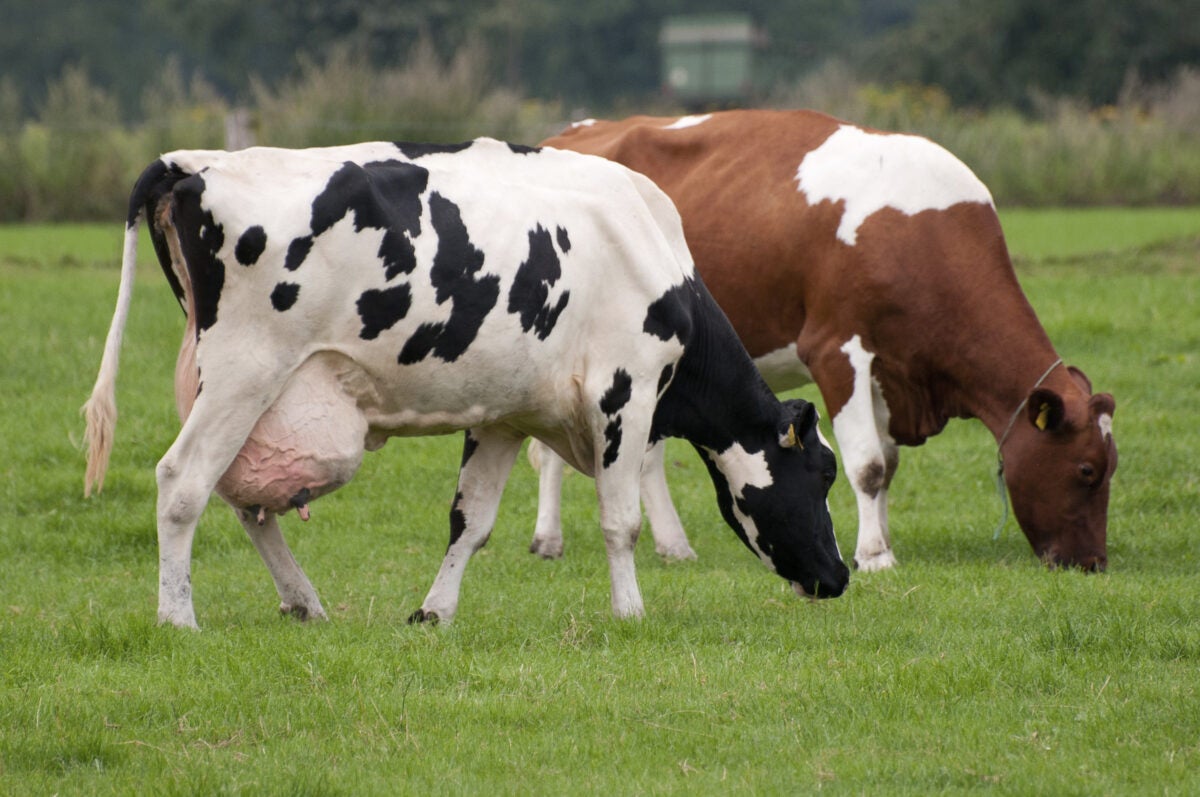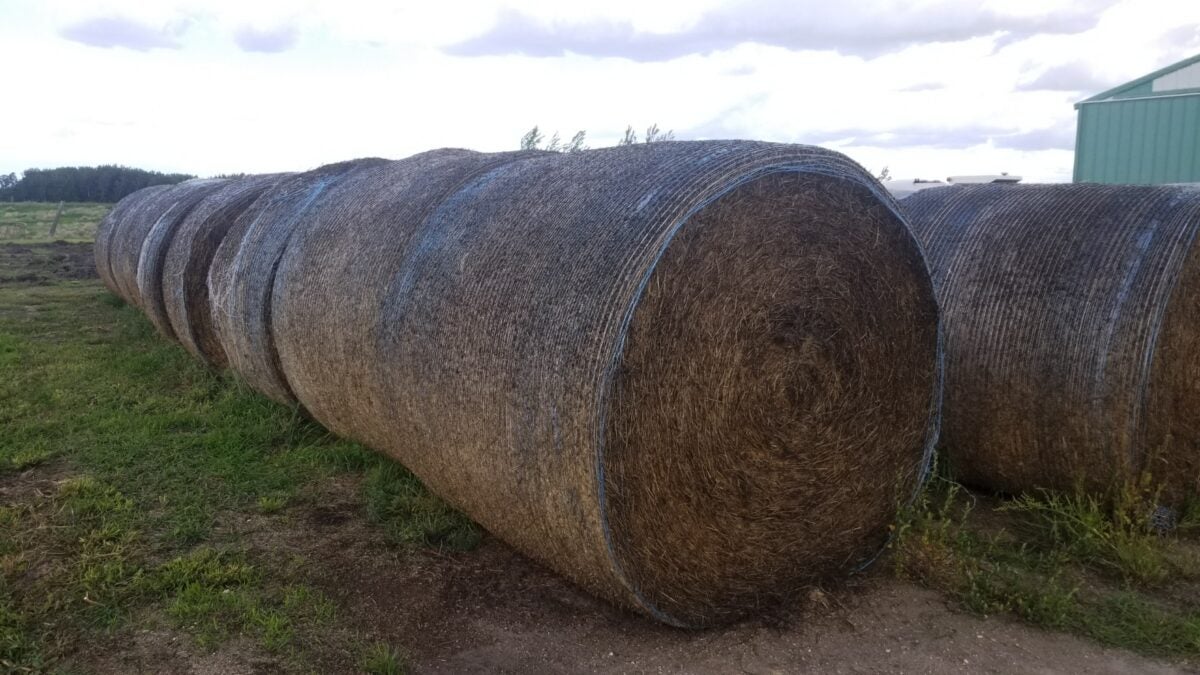Minnesota farmers have been slapped in the face by Mother Nature this year.
A major drought has dried up hay crops, leaving many farmers and cattle ranchers in the dust and prompting a multipronged government response that relies in part on relaxing hours-of-service regulations on truck drivers.
‘I’ve never seen it like this’
“We really had a one-two punch this summer,” Minnesota Commissioner of Agriculture Thom Petersen told FreightWaves. “It wasn’t just that we didn’t get rain, it was that we had these extreme heat days, too. We had so many days over 90 degrees. It was hot and dry.”
Some rain finally came in late August and early September, but Petersen said it was too little too late. The damage had been done.
“The crop is finishing right now. Temperatures will start cooling. For a lot of Minnesota, even getting the rain now is too late,” Petersen lamented.
The entire state has been in a drought — varying degrees from place to place — since early June. In recent weeks, “extreme drought” has been expanding across the northern half of Minnesota, according to the U.S. Drought Monitor, with 8% to 10% of northern Minnesota in an “exceptional drought,” the worst category.
Petersen said farmers normally do up to four cuttings of hay a year in some parts of the state, but many were lucky to do one or two this season. Making matters worse, Minnesota started the season with its third-lowest hay inventory since 1950.
“I’ve been doing drought calls with ag stakeholders for almost three months now, so it’s been a long summer, for sure,” Petersen added.

Petersen, who owns a farm in northern Minnesota, has been talking with farmers in person across the state since early July. Not only have hay farmers been suffering, but so have the estimated 2,000 dairy farmers in Minnesota who need hay to feed their cows.
According to Petersen, dozens of these dairy farmers have gone out of business because of the drought. They’re a vital part of the state’s economy, and Minnesota is a major producer of milk cows, according to a recent report on the Beef2Live website. The impacts travel throughout the supply chain.
“It’s the feed store, the sales barn, the agronomists. There’s just so many different things that a feed supply helps support,” Petersen added. “The money that cycles in the communities … livestock is good for the economy and the climate. We want pastureland, we want hay land. Every farmer we can keep in that situation is very helpful.”
Petersen said Minnesota farmers are typically independent and resilient, but the situation has many throwing in the towel.
“The drought has pushed a lot of farmers into selling their dairy herds,” Petersen explained. “We’ve had very large sell-offs at our local auction barns, especially in northern Minnesota.”
Neil Peterson has been a hay farmer for 40 years. He would normally be on his third cutting by early September, with all three cuttings yielding 700 to 800 1,800-pound round bales. Because of the drought, he only managed one cutting for a total of 104 bales — a half-ton per acre compared to 3 ½ to 4 in a normal year.
“I’ve never seen it like this. I’ve seen it dry, but never like this,” Peterson said. “Even in dry years, we would still see a tremendous first cutting crop, but not this year.”
Peterson’s farm in St. Hilaire in northwestern Minnesota usually gets more than enough rain, but this year he’s taken a $50,000 loss on hay because of the drought. He said this is a lot for a 1,000-acre farm where hay makes up 30% to 35% of the business..
Some of Peterson’s other crops have also come up short, and he resorted to cutting and baling his oats for hay to feed to his son-in-law’s cows that live on the farm.
Peterson and his family have off-farm jobs, so they will likely be able to stay afloat. But this isn’t the case for some farmers they know who have been practically begging them for hay.
State, federal intervention
Petersen and the state have been trying to help struggling farmers as much as possible by encouraging them to attend hay auctions, posting a link to these auctions on the Minnesota Department of Agriculture (MDA) website.
The state has unlocked zero-interest loans and is working on a possible relief package, and state lands have been opened that can be mowed for hay and grazed by cattle. U.S. Agriculture Secretary Thomas Vilsack visited Minnesota in mid-August. Petersen said Vilsack is working on a federal aid package.
Some farmers have received hay from other parts of Minnesota, as well as nearby states, where the drought has been less severe.

To take pressure off farmers, Gov. Tim Walz issued an executive order in late July waiving hours-of-service regulations for truck drivers delivering emergency loads of hay into Minnesota. As the situation worsened, Petersen later fought to expand the executive order to include livestock, water supplies and commodities used for or in livestock feed.
“We added livestock because we have farmers in northern Minnesota who are sending cattle to southern Minnesota for grazing. There’s cattle moving to sales barns all over the state now,” Petersen said. “We felt that was very important, and one last thing farmers wouldn’t have to worry about.”
Petersen added that moving hay is very competitive, mainly because of a driver shortage. He wants truckers to be safe and follow the executive order guidelines when helping. Truckers will have to be patient due to long waits at sales barns and packing plants because of the number of cattle being moved.
Petersen said droughts — this one in particular — take a toll on farmers mentally, and that the MDA has free counselors available for any farmers who want to talk.
“[They’re] just hoping it rains every day and watching it dry up, the crop that they put so much time into. And then having to sell their herd of cattle that they may have had on their farm for generations that their family worked to build up,” Petersen said.
Peterson, the St. Hilaire farmer, sees that distress regularly.
“Anyplace you go, everybody is just depressed,” he said. “There’s some desperation in some of these people’s voices.”
Click here for more FreightWaves articles by Nick Austin.
You might also like:
5 states with toughest chain laws for truckers










